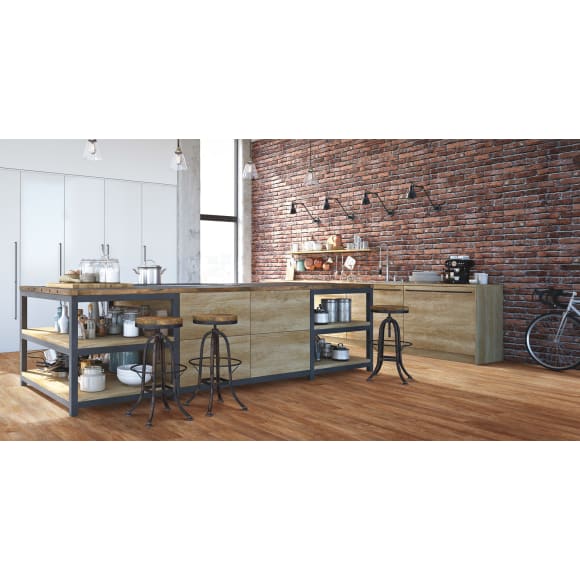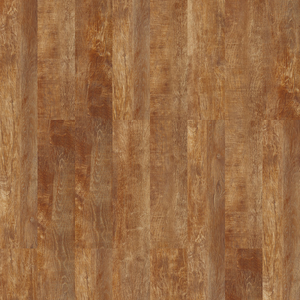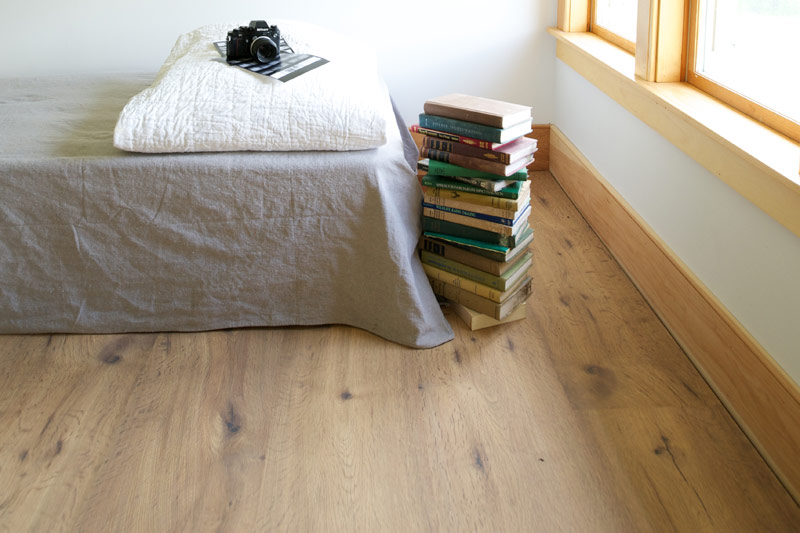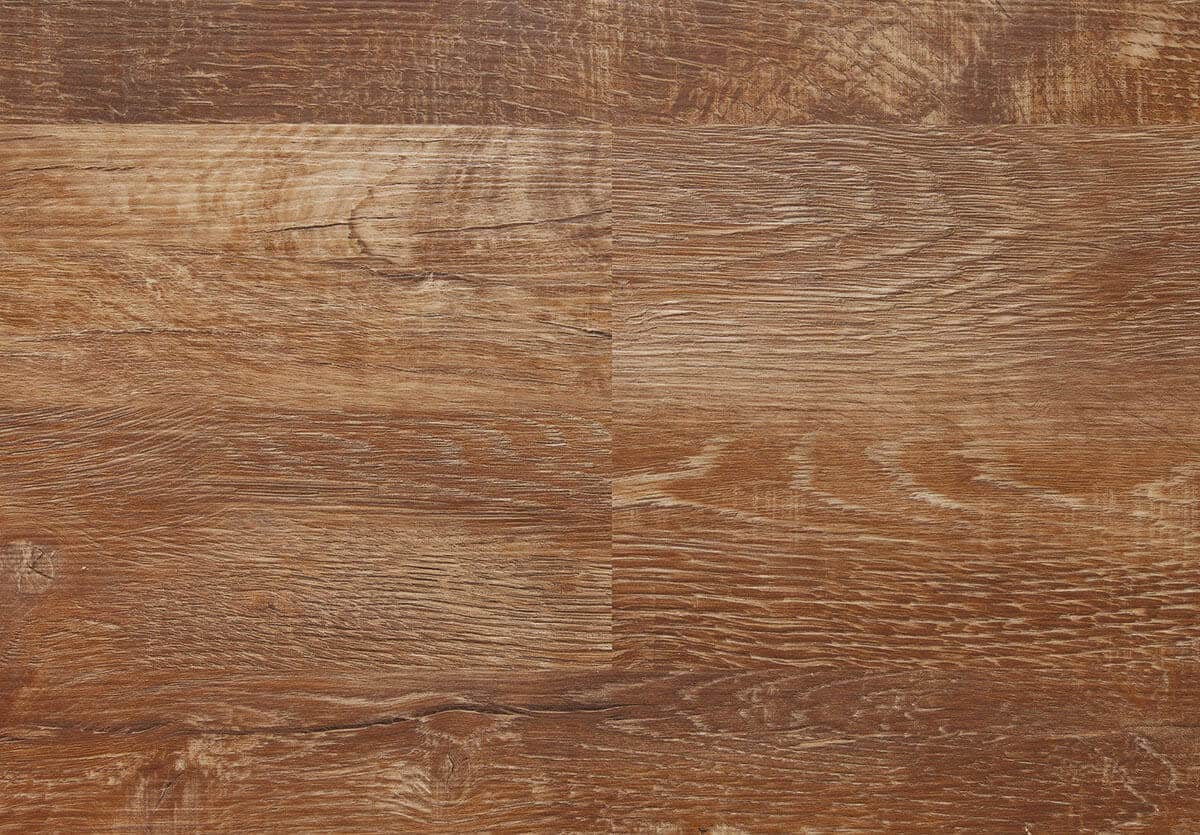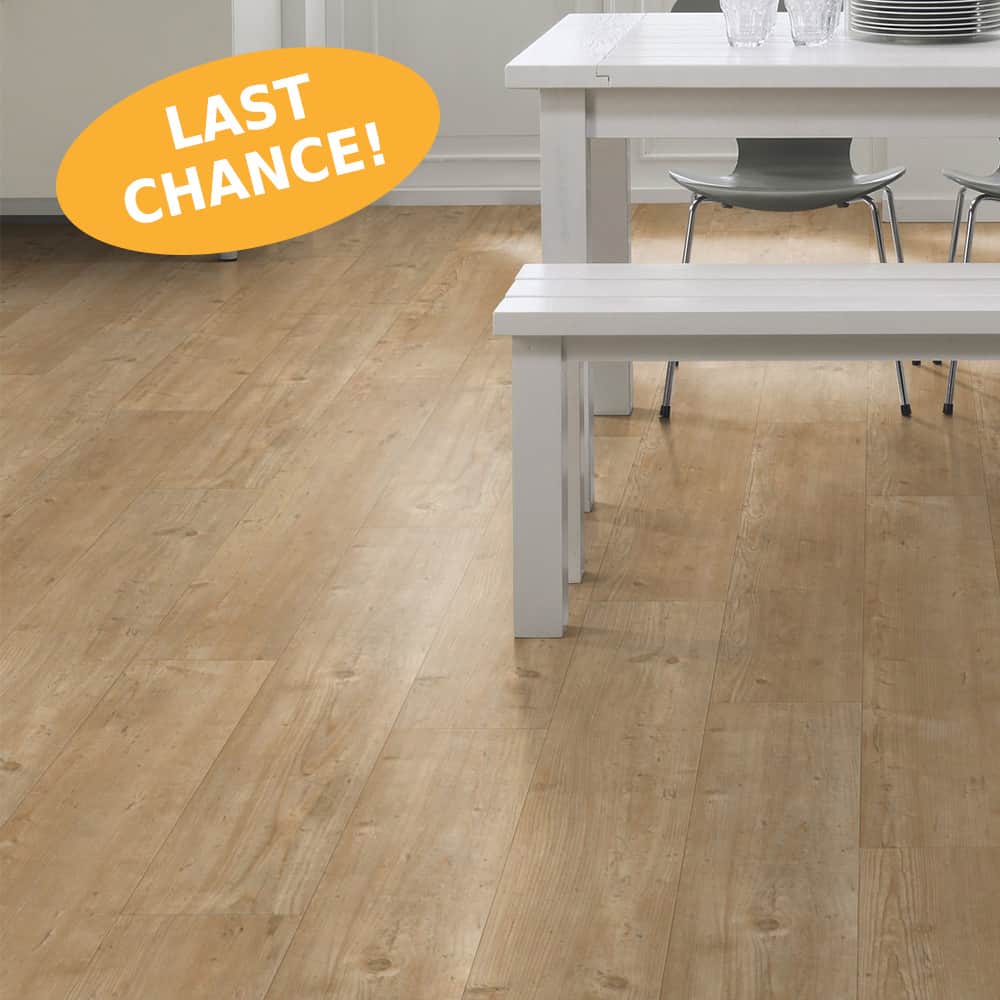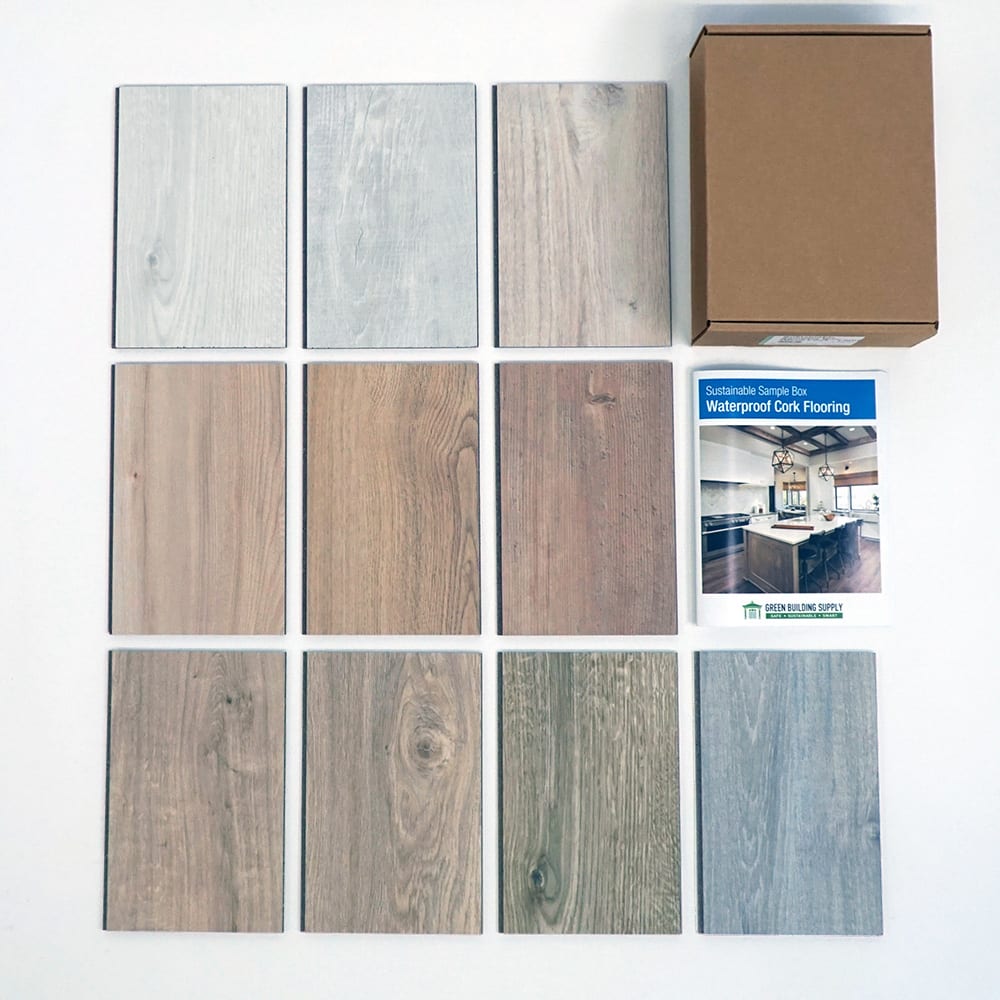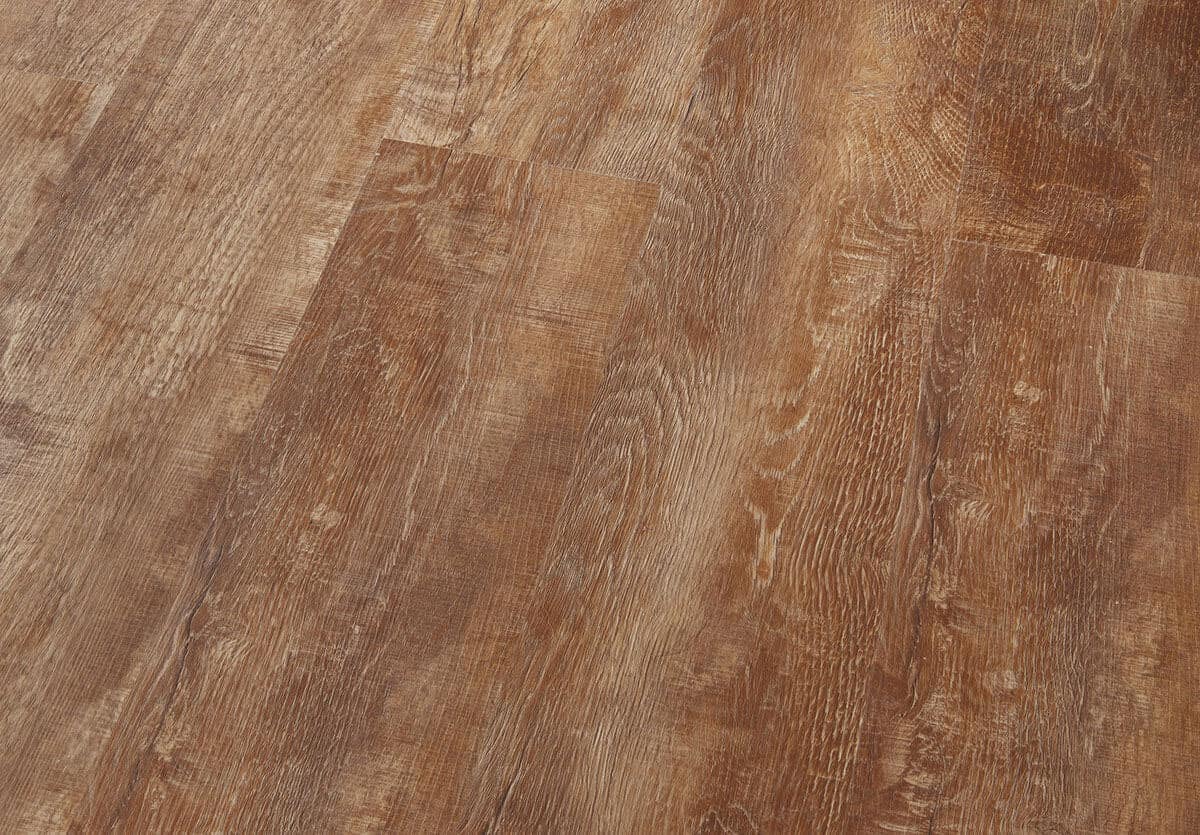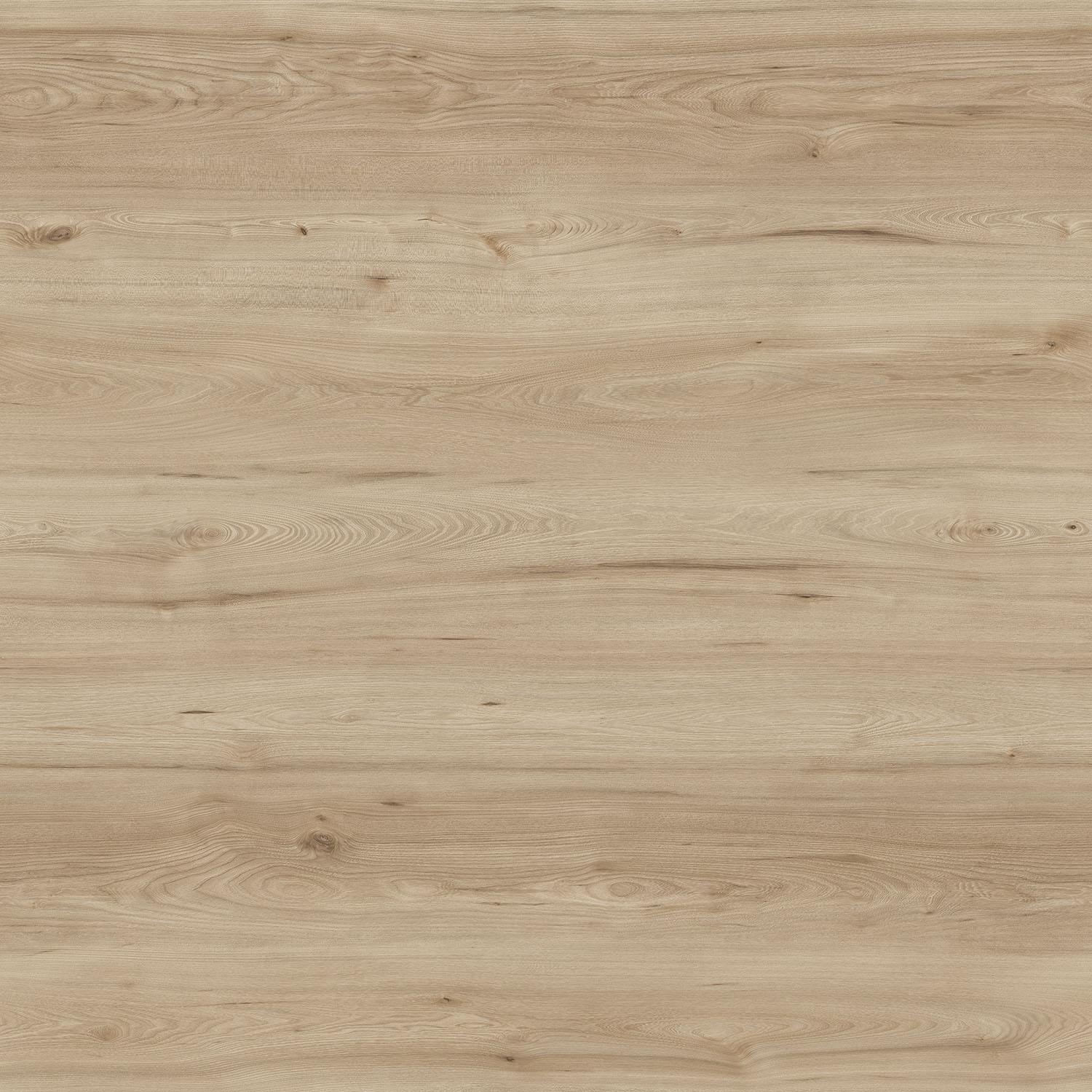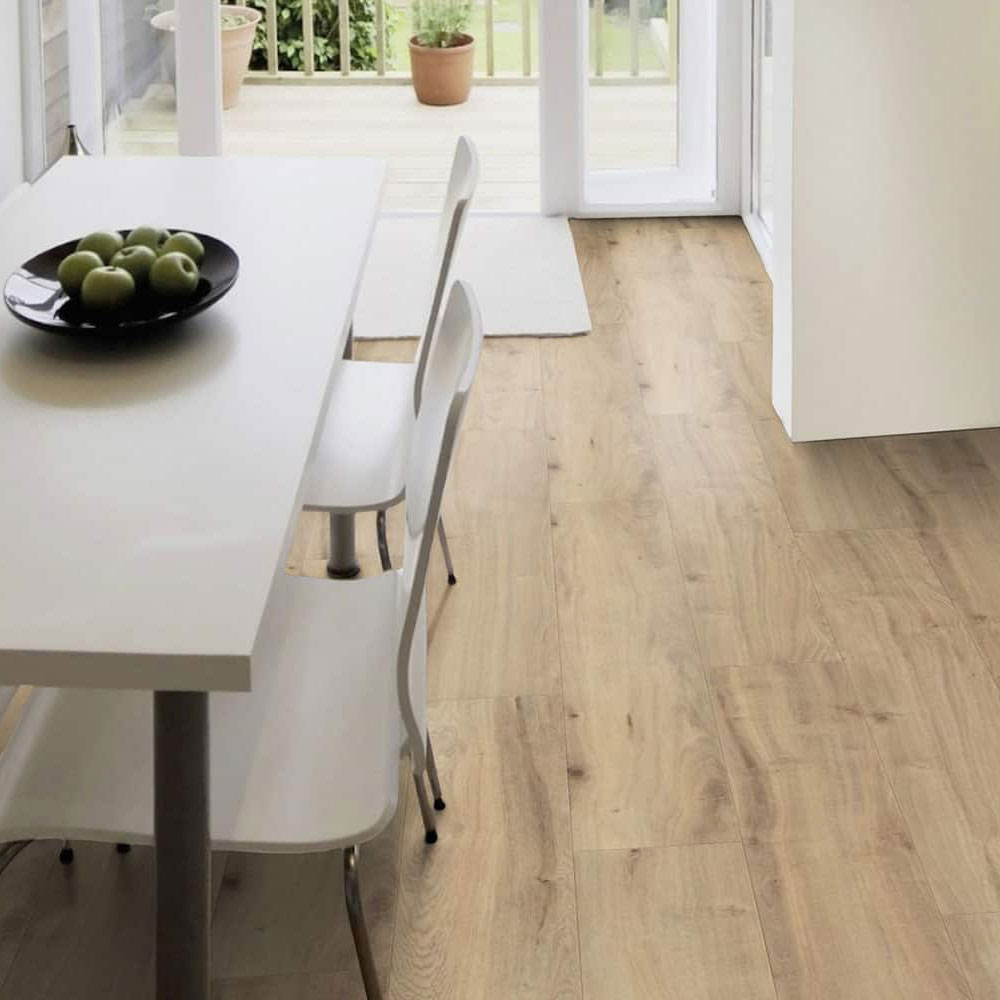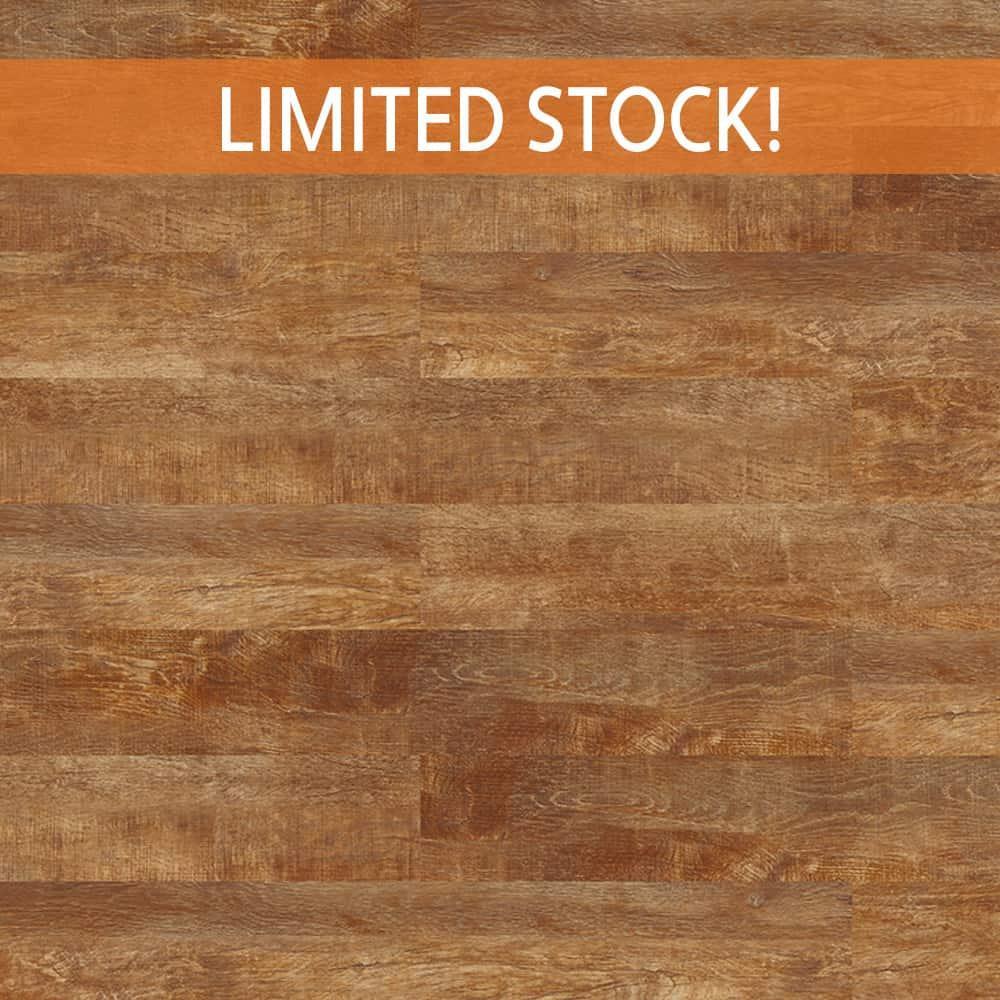What Is Wood Look Cork Flooring?
When I first heard about wood-look cork flooring, I was intrigued by the idea of combining the beauty of wood with the unique benefits of cork. It sounded like the perfect flooring solution for anyone wanting the natural warmth and elegance of wood without its downsides. Wood-look cork flooring has quickly become a favorite for people looking to balance aesthetics, comfort, and eco-friendliness. Here’s what I learned about this innovative flooring option.
- Cork with a Wood-Like Appearance: Wood-look cork flooring is designed to mimic the appearance of traditional hardwood floors while being made from cork. Through advanced printing technology, manufacturers can replicate a variety of wood grains, textures, and shades. It’s almost uncanny how closely cork can resemble natural wood.
- Sustainable Harvesting Process: Cork comes from the bark of cork oak trees, which can be harvested without damaging the tree itself. This renewable material is eco-friendly, unlike wood, which involves cutting down trees. Knowing that my floor comes from a sustainable source gave me peace of mind.
- Softness and Cushioning Underfoot: One of the most noticeable benefits of cork is how comfortable it feels to walk on. Unlike hardwood, which can be rigid, cork has a natural give that feels soft and springy. This makes it ideal for areas where you spend a lot of time standing, like the kitchen or living room.
- Natural Insulation: Cork is a natural insulator, keeping your floors warm in the winter and cool in the summer. I love how I no longer need to worry about stepping onto cold floors first thing in the morning. It also helps with soundproofing, making it a great option for upstairs rooms or apartments.
- Durable Yet Forgiving: Even though cork is softer than wood, it’s surprisingly durable. Its natural elasticity allows it to bounce back from minor dents and impacts. Plus, many wood-look cork floors come with a protective layer that adds scratch resistance.
- Hypoallergenic and Anti-Microbial: Cork has properties that resist the growth of mold, mildew, and allergens, making it a great choice for people with allergies. The material is naturally resistant to moisture and microbes, making it ideal for kitchens and bathrooms.

Benefits of Choosing Cork Flooring with a Wood Aesthetic
Choosing cork flooring with a wood aesthetic is more than just a design choice. It’s a practical decision that brings a range of benefits to your home. When I made the switch, I was pleasantly surprised at how it combined the best aspects of both wood and cork. Here are some of the top benefits I’ve experienced with wood-look cork flooring.
Enhanced Comfort
One of the things I love most about cork flooring is its comfort. Walking on cork is a completely different experience from hardwood—there’s a natural cushioning effect that makes it easier on my feet and joints. This comfort is especially noticeable in rooms where I spend long periods, like the kitchen or office.
Stylish Wood-Like Appearance
If you’re like me and love the look of wood but worry about its high maintenance, cork with a wood aesthetic is the perfect compromise. The intricate wood grain patterns and natural hues give it the appearance of real wood without the associated drawbacks.
Durability with Added Flexibility
I was initially worried that cork’s softness might mean it would wear down quickly, but that hasn’t been the case. Cork flooring is surprisingly durable, and its flexibility means that it can withstand minor impacts better than hardwood, which tends to scratch and dent more easily.
Low Maintenance
I’ve always found that maintaining cork flooring is much easier than dealing with hardwood. It doesn’t require refinishing, and regular sweeping or vacuuming keeps it looking new. The protective layer on top also makes it resistant to stains and spills, which is a lifesaver for a busy household.
Thermal Insulation
Cork’s natural insulating properties keep my home feeling cozy during colder months. It retains heat far better than wood or tile, which means I don’t have to deal with the shock of cold floors. In summer, it stays cool, making it a comfortable choice year-round.
Sustainable and Eco-Friendly
Sustainability was a big factor for me when choosing cork. Cork flooring is harvested from the bark of cork oak trees, which regrows every few years, making it one of the most eco-friendly flooring materials available. If you’re trying to reduce your environmental impact, cork is a great choice.
Installation Tips for Wood Look Cork Flooring
When I decided to install wood-look cork flooring in my home, I wasn’t sure what to expect. Thankfully, it turned out to be one of the most straightforward DIY projects I’ve undertaken. Whether you’re installing it yourself or hiring a professional, there are a few important steps that can make the process smoother. Here’s what I learned.
Acclimate the Flooring
Before installation, I made sure to let the cork planks acclimate to the room’s environment. This is crucial because cork, being a natural material, can expand or contract based on temperature and humidity. I let my flooring sit in the room for about 48 hours to avoid any warping after installation.
Prepare the Subfloor
The subfloor needs to be perfectly level and clean before laying down cork flooring. I spent time ensuring that the surface was smooth, without any debris, as any imperfections could show through or damage the cork. A clean and level subfloor is essential for a long-lasting installation.
Use a Floating Floor Method
One of the easiest ways to install wood-look cork flooring is through the floating floor method. This means the planks click together without being glued or nailed to the subfloor. It’s an incredibly beginner-friendly technique, and I found it much faster than other installation methods.
Plan Your Layout
I quickly learned the importance of planning the layout before starting. I dry-laid the planks across the room to ensure that I wouldn’t end up with awkwardly small pieces along the walls. Taking the time to plan the layout made the installation process much smoother.
Cutting the Planks
When it came time to cut the planks, I used a utility knife, which worked perfectly for cork. The material is much easier to cut than hardwood, which was a pleasant surprise. This made the entire process much faster, and I was able to make precise cuts for edges and corners.
Seal the Gaps
After installation, I made sure to seal the gaps around the edges of the room, especially in areas prone to moisture like kitchens or bathrooms. This helps to prevent water damage and keeps the flooring secure. I found that using a cork-specific sealant worked best for maintaining the floor’s integrity.
Comparing Wood Look Cork to Traditional Hardwood
If you’re torn between choosing wood-look cork or traditional hardwood flooring, you’re not alone—I faced the same dilemma. Both options have their pros and cons, but after experiencing both firsthand, I realized that each offers something unique. Here’s a side-by-side comparison of wood-look cork and traditional hardwood.
Appearance and Aesthetics
The first thing most people notice about hardwood is its timeless beauty. I’ll admit, there’s nothing quite like the natural grain of wood. However, wood-look cork does a fantastic job of mimicking that appearance. If you aren’t a flooring expert, it’s hard to tell the difference at first glance. Plus, cork comes in a variety of wood grain styles, giving it versatility.
Comfort
When it comes to comfort, cork wins hands down. Walking on hardwood can feel hard and unforgiving, especially after long periods. Cork, on the other hand, has a natural give to it that cushions your feet. I really noticed the difference after installing cork in my kitchen—my legs didn’t feel as tired after hours of standing and cooking.
Durability
Hardwood is known for its durability, and in high-traffic areas, it can last for decades if properly maintained. However, it’s prone to scratches, dents, and water damage. Cork, while softer, is surprisingly durable and more resistant to dents and scratches thanks to its elastic properties. It also handles moisture better, which is a significant advantage in kitchens and bathrooms.
Maintenance
Hardwood requires regular maintenance, including refinishing and sealing to keep it looking its best. Cork is much lower maintenance. I’ve found that all it needs is regular sweeping and occasional mopping. The protective top layer on wood-look cork helps resist stains and scratches, making it an easier option for busy households.
Insulation
Cork has natural insulating properties that make it warmer and quieter underfoot compared to hardwood. Hardwood can be cold in the winter, which isn’t ideal for areas where you often go barefoot. Cork’s insulating nature means that it retains heat better, making it a more comfortable option year-round.
Environmental Impact
If sustainability is important to you, cork is the clear winner. Cork is harvested from the bark of cork trees, which regenerate, making it an eco-friendly material. Hardwood, while renewable, involves cutting down trees, which has a greater environmental impact. For me, choosing cork aligned with my desire to make more sustainable choices in my home.
Caring for and Maintaining Wood Look Cork Floors
I’ve found that one of the biggest perks of wood-look cork flooring is how easy it is to maintain. It doesn’t require as much attention as hardwood, but there are still a few steps to ensure it stays in top condition. Here are my tried-and-true tips for keeping cork floors looking beautiful.
Regular Sweeping and Vacuuming
Just like any other flooring, wood-look cork benefits from regular sweeping or vacuuming. Dust, dirt, and debris can accumulate and cause tiny scratches over time. I make it a habit to sweep my floors every few days to keep them clean and free of particles.
Mopping with a Damp Cloth
Cork is naturally resistant to moisture, but it’s still a good idea to avoid soaking it with water. When mopping, I use a damp cloth or mop rather than a wet one. I’ve found that this helps keep the floors clean without risking water damage.
Use Cork-Specific Cleaners
While cork is easy to clean, it’s best to use products specifically designed for cork flooring. Harsh chemicals can break down the protective finish over time. I always opt for gentle, cork-friendly cleaners to preserve the floor’s appearance.
Protect Against Furniture Scratches
Just like hardwood, cork can get scratched by heavy furniture. I added felt pads to the legs of my chairs and tables to prevent any unnecessary damage. This simple step has made a big difference in keeping the floors scratch-free.
Avoid High Heels and Sharp Objects
Cork’s soft texture means it can be punctured by sharp objects, including high heels. I make sure to take off my shoes before walking on the cork floor to prevent any dents or punctures. It’s a small habit that helps maintain the floor’s smooth surface.
Reapply Protective Finishes
Every few years, it’s a good idea to reapply a protective finish to cork flooring. This helps maintain its resistance to scratches and stains. I’ve done this once since installing the floor, and it still looks as good as new. It’s a simple maintenance task that prolongs the life of the flooring.
Eco-Friendly Features of Cork Flooring
One of the main reasons I was drawn to cork flooring was its eco-friendly properties. In today’s world, making sustainable choices for our homes is more important than ever, and cork is one of the most environmentally friendly flooring materials available. Here’s why cork flooring stands out as a green option.
Harvested from Renewable Resources
Cork is harvested from the bark of cork oak trees, and the best part is that the tree doesn’t need to be cut down. The bark regenerates every 9 to 12 years, allowing for repeated harvesting over the tree’s lifespan. This renewable process makes cork one of the most sustainable materials in the flooring industry.
Minimal Environmental Impact
Unlike traditional hardwood, which involves logging and deforestation, cork production has a minimal impact on the environment. The trees remain standing and continue to absorb carbon dioxide, which helps reduce greenhouse gases. I felt good knowing that my flooring choice was contributing to a healthier planet.
Biodegradable and Recyclable
Cork is 100% biodegradable and recyclable, unlike many synthetic flooring options. At the end of its lifecycle, cork can be broken down naturally, leaving no toxic waste behind. It’s comforting to know that when my floors eventually wear out, they won’t contribute to landfill waste.
Naturally Fire-Resistant
Cork is naturally resistant to fire, which means it doesn’t release harmful chemicals if it’s exposed to flames. I didn’t realize this when I first installed the flooring, but it’s a reassuring feature, especially for homes with fireplaces or in areas prone to wildfires.
Carbon Sequestration
Cork trees play a critical role in capturing and storing carbon dioxide. By choosing cork flooring, I’m supporting a process that helps reduce carbon emissions in the atmosphere. It’s a small but impactful way to contribute to global sustainability efforts.
Energy Efficient
Cork’s natural insulating properties also make it energy efficient. By reducing heat loss in the winter and keeping rooms cool in the summer, it helps lower energy consumption. I’ve noticed a difference in my utility bills since installing cork flooring, which has been a bonus.
Where to Use Wood Look Cork Flooring in Your Home
When it comes to versatility, wood-look cork flooring truly shines. It can be installed in a variety of spaces, each benefiting from its unique combination of aesthetics and functionality. After having it in my own home, I’ve found it works especially well in certain areas. Here are the best places to install wood-look cork flooring.
Kitchens
Cork’s cushioning effect makes it perfect for kitchens, where you often stand for long periods. I’ve found it much more comfortable than tile or hardwood, especially during those marathon cooking sessions. Plus, its resistance to moisture and spills makes it a practical choice for this high-traffic area.
Living Rooms
If you want a cozy yet stylish living room, cork is an excellent option. Its warmth and soundproofing qualities help create a relaxing atmosphere. I love how my cork floors make the room feel inviting, and the wood aesthetic adds a touch of elegance.
Bedrooms
Cork’s natural insulation makes it ideal for bedrooms, where warmth and comfort are key. I installed cork in my bedroom, and I’ve noticed how much quieter and more serene the space feels. It’s also a hypoallergenic choice, perfect for people who suffer from allergies.
Home Offices
Cork flooring is a great choice for home offices. It’s comfortable underfoot during long work hours, and its sound-absorbing properties help minimize distractions. I’ve noticed that my office feels quieter and more focused since making the switch to cork.
Basements
Cork’s resistance to moisture and its insulating properties make it a solid choice for basements. While I haven’t installed cork in my basement yet, it’s high on my list for future renovations. Its ability to handle humidity without warping is a major plus.
Bathrooms
Believe it or not, wood-look cork is also suitable for bathrooms. It’s naturally resistant to mold and mildew, which makes it a better option than traditional wood. I’ve installed it in my guest bathroom, and I love how it adds a warm, natural feel to the space without worrying about water damage.
Waterproof Cork Flooring Barnwood
Waterproof Cork Flooring – Wood Look (CYBER OAK)
Waterproof Cork Flooring Field Oak
Waterproof Cork Flooring – Wood Look
Related Posts:
